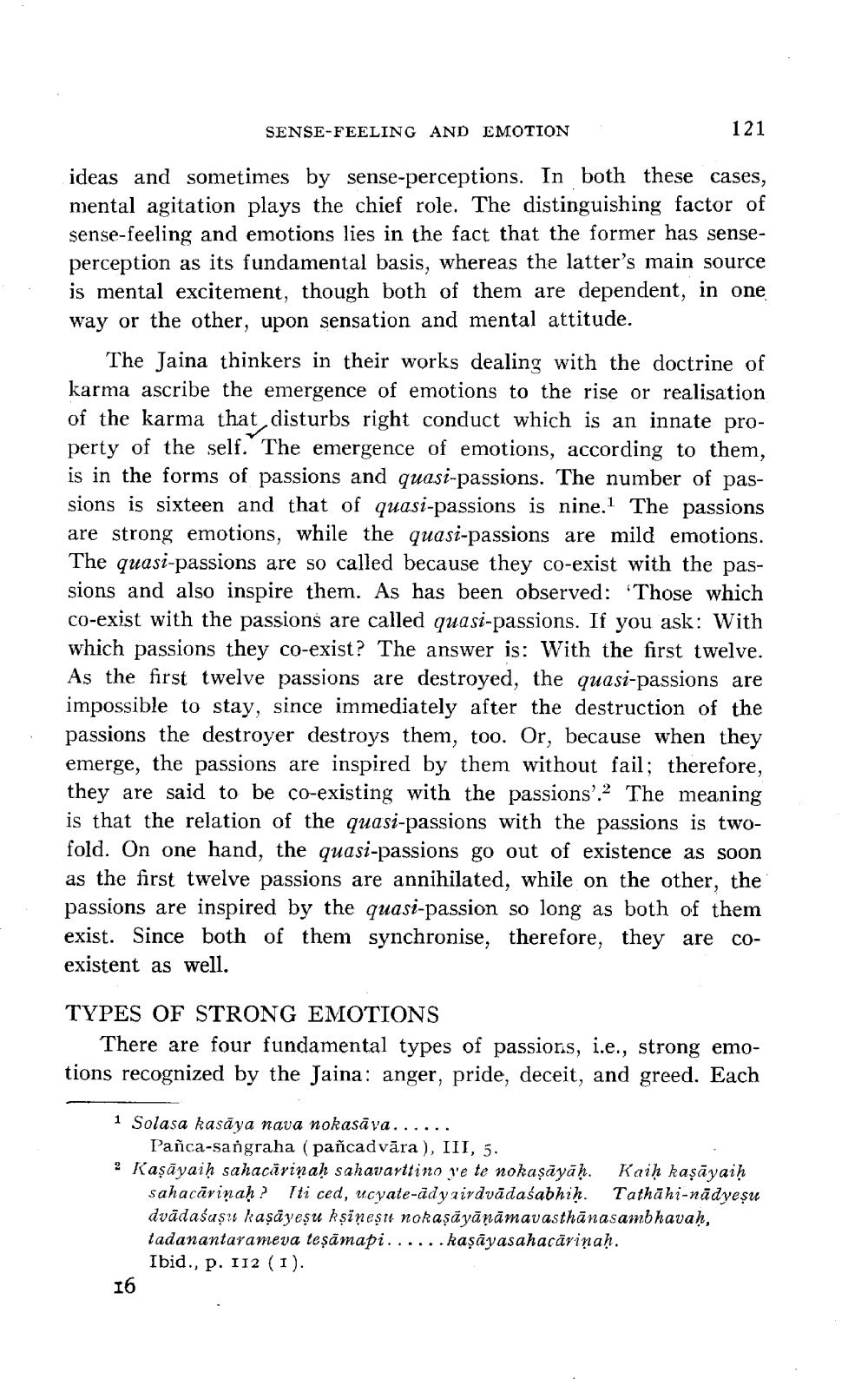________________
SENSE-FEELING AND EMOTION
ideas and sometimes by sense-perceptions. In both these cases, mental agitation plays the chief role. The distinguishing factor of sense-feeling and emotions lies in the fact that the former has senseperception as its fundamental basis, whereas the latter's main source is mental excitement, though both of them are dependent, in one way or the other, upon sensation and mental attitude.
121
The Jaina thinkers in their works dealing with the doctrine of karma ascribe the emergence of emotions to the rise or realisation of the karma that disturbs right conduct which is an innate property of the self. The emergence of emotions, according to them, is in the forms of passions and quasi-passions. The number of passions is sixteen and that of quasi-passions is nine. The passions are strong emotions, while the quasi-passions are mild emotions. The quasi-passions are so called because they co-exist with the passions and also inspire them. As has been observed: 'Those which co-exist with the passions are called quasi-passions. If you ask: With which passions they co-exist? The answer is: With the first twelve. As the first twelve passions are destroyed, the quasi-passions are impossible to stay, since immediately after the destruction of the passions the destroyer destroys them, too. Or, because when they emerge, the passions are inspired by them without fail; therefore, they are said to be co-existing with the passions'.2 The meaning is that the relation of the quasi-passions with the passions is twofold. On one hand, the quasi-passions go out of existence as soon as the first twelve passions are annihilated, while on the other, the passions are inspired by the quasi-passion so long as both of them exist. Since both of them synchronise, therefore, they are COexistent as well.
TYPES OF STRONG EMOTIONS
There are four fundamental types of passions, i.e., strong emotions recognized by the Jaina: anger, pride, deceit, and greed. Each
1 Solasa kasaya nava nokasāva..... Pañca-sangraha (pañcadvāra), III, 5.
2 Kaşayaiḥ sahacariṇaḥ sahavarttino ye te nokaṣāyāḥ. sahacariṇaḥ? Iti ced, ucyate-ady airdvadaśabhiḥ. dvādaśaṣu kaşayeṣu kṣineṣu nokaṣāyāṇāmavasthanasambhavaḥ, tadanantarameva teşämapi......kaṣāyasahacarinaḥ. Ibid., p. 112 (1).
16
Kaiḥ kaşayaiḥ Tathahi-nadyesu




